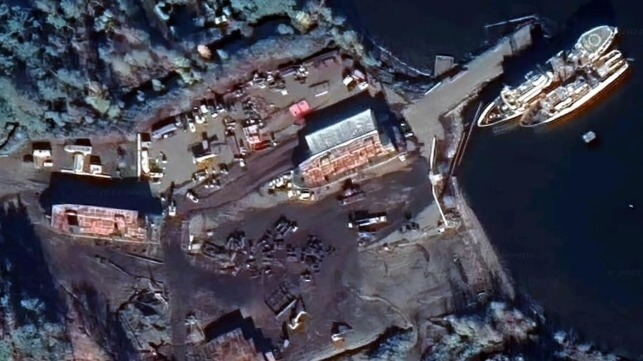Recycling Yard in Salish Sea Draws International Scrutiny

For years, the environmental non-profit NGO Shipbreaking Platform has shone a light on the low-tech beaching operations in Chittagong, Alang and Gadani. But in a new petition, the group has turned its eye in an unexpected direction: Vancouver Island, B.C., where a new shipbreaking operation has set up shop on the shores of the Salish Sea.
According to the local K’ómoks First Nation (KFN), a recycling yard has been operating at an old log terminal in Union Bay, B.C. for the last two years. The KFN notes that the area is the source of half of B.C.'s shellfish aquaculture, including its own traditional food supply. It is also the most important spawning area for herring in the Strait of Georgia and a popular overwintering area for seabirds, according to NGO Shipbreaking Platform.
"We’ve discovered that there are no federal or provincial regulations in place for the deconstruction of ships on land. Until it’s too late and an actual environmental impact happens, there is nothing holding the company accountable, just voluntary adherence to the guidelines they’ve set for themselves," said KFN Chief Councillor Nicole Rempel in a statement.
Recent photos from the site show that yard operator Deep Water Recovery Ltd. has one barge on shore and three defunct vessels just off the beach. These include the former B.C. Ferries vessel Queen of Burnaby, the U.S. government survey vessel NOAAS Surveyor and the government research trawler NOAAS Miller Freeman.
Surveyor was decontaminated to remove hazardous substances after her decommissioning in the late 1990s, and she has been resold and relocated several times over the past 20 years. Miller Freeman was sold at auction in 2013; at the time, the Government Services Agency said that all known and suspected sources of PCBs had been removed. However, GSA also cautioned bidders that the vessel was known to contain asbestos in her pipe insulation, floor tile and wallboard - common asbestos-based materials for a vessel of her age.
"We do not consider that the landing of vessels onto shores that are unable to contain the many hazardous materials onboard and embedded within the ships’ structures, as currently happening at Union Bay, is a sustainable or acceptable way of recycling ships," wrote NGO Shipbreaking Platform in a letter to top Canadian officials, including Prime Minister Justin Trudeau. "Shipbreaking activities conducted without full containment can easily pollute land, water and air, as ships are almost invariably contaminated or containing harmful materials in their paints, gaskets, flooring, insulation and fire retardancy materials (e.g. asbestos, brominated flame retardants), and need to be emptied of residue oils."
In an interview Friday, Deep Water Recovery manager Mark Jurisich said that he has never been contacted by NGO Shipbreaking Platform, and that environmental concerns about the possible scrapping of two NOAA vessels are overstated. The two ships have already been remediated to remove pollutants and their fuel tanks have been fully cleaned, he said.
To date, his company has only dismantled steel barges, and the cutting work is done in a steel catchment basin on an asphalt pad, he said. The site is currently zoned for marine industrial activity, which he believes is enough to satisfy local permitting requirements.
